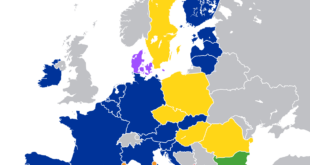- A recent study has reported that “son bias” is on a decline in India as Sex Ratio at Birth normalised from 111 boys per 100 girls in 2011 to 108 boys per 100 girls in 2019-21.
- The average annual number of baby girls “missing” in India fell from about 4.8 lakh in 2010 to 4.1 lakh in 2019.
- The “missing” here refers to how many more female births would have occurred during this time if there were no female-selective abortions.
- From 111 boys per 100 girls in India’s 2011 census, the sex ratio at birth have normalised slightly, narrowing to about 109 in the 2015-16 wave of the National Family Health Survey (NFHS) and to 108 boys in the NFHS 5 2019-21.
- Between 2000-2019, nine crore female births went “missing” because of female-selective abortions.
Religion Wise Sex Ratio:
- The report has also analysed religion-wise sex selection, pointing out that the gap was the highest for Sikhs.
- In the 2001 census, Sikhs had a sex ratio at birth of 130 males per 100 females, far exceeding that year’s national average of 110.
- By the 2011 census, the Sikh ratio had narrowed to 121 boys per 100 girls.
- It now hovers around 110, about the same as the ratio of males to females at birth among the country’s Hindu majority (109), according to the latest NFHS.
- Both Chirstians (105 boys to 100 girls) and Muslims (106 boys to 100 girls) have sex ratios close to the natural norm.
History of Sex Ratio in India
- Globally, boys modestly outnumber girls at birth, at a ratio of approximately 105 male babies for every 100 female babies.
- This was the ratio in India in the 1950s and 1960s, before prenatal sex tests became available across the country.
- The problem began in the 1970s with the availability prenatal diagnostic technology allowing for sex selective abortions.
- India legalised abortion in 1971 but the trend of sex selection started picking up in the 1980s due to the introduction of ultrasound technology.
- In the 1970s, India’s sex ratio was at par with the global average of 105-100, but this widened to 108 boys per 100 girls in the early 1980s, and reached 110 boys per 100 girls in the 1990s.
Challenges in Ensuring Balanced Birth Sex Ratio
- There is considerable son preference in all states, except possibly in Kerala and Chhattisgarh.
- This son’s preference is derived from a regressive mindset. E.g.: People associate girls with dowry.
- Cheaper technology like ultrasound helps in sex selection.
Way Forward
- Increasing female education and economic prosperity help to improve the ratio. In this pursuit, the government’s Beti-Bachao Beti Padhao Campaign has achieved remarkable success in bringing behavioural change in the society.
- There is an urgent need to reach young people for reproductive health education and services as well as to cultivate gender equity norms.
SOURCE: THE HINDU,THE ECONOMIC TIMES,MINT
 Chinmaya IAS Academy – Current Affairs Chinmaya IAS Academy – Current Affairs
Chinmaya IAS Academy – Current Affairs Chinmaya IAS Academy – Current Affairs



